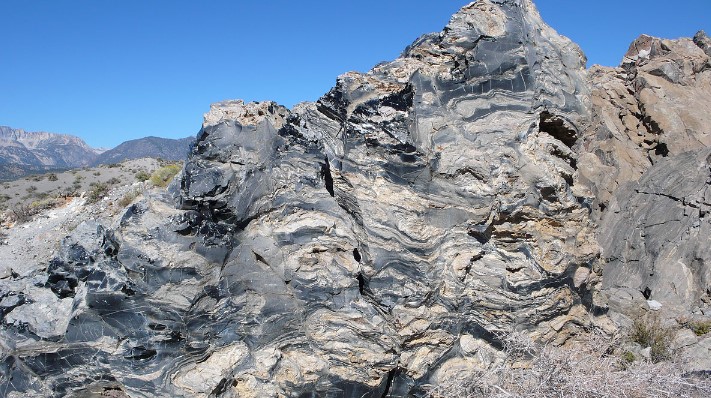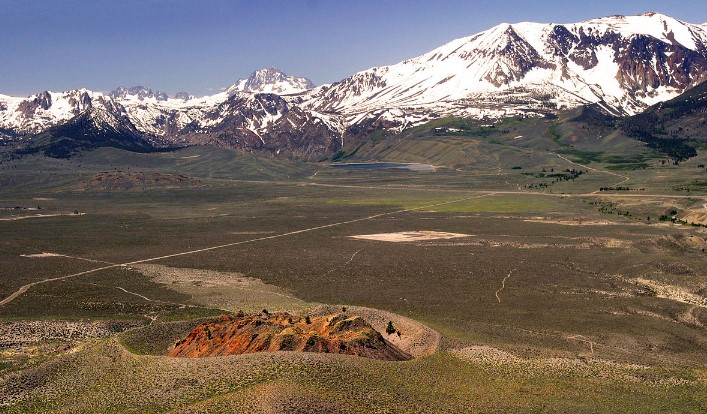Page Contents
Do you enjoy geological formations and natural wonders? Panum Crater in California is a volcanic formation that will captivate you. Located in the Mono-Inyo Craters chain, Panum Crater is an active volcanic cone. Approximately 600 to 700 years ago, a series of events resulted in the formation of this rhyolitic lava dome.
Visitors and researchers come to Panum Crater from all over the world to see its geological wonders. There are many hiking, camping, and geological studies to be done in this area because of its unique geological formation, diverse wildlife, and scenic landscape. Panum Crater will amaze you with its mystique, beauty, and natural wonders.
Panum Crater Formation
As a result of a series of volcanic events, Panum Crater was formed. When magma rises deep inside the Earth’s crust and contacts water just below the surface, the eruption begins. There was a large, violent eruption, causing old lake bottom sediments to be thrown into the air, and these were deposited in little mounds around the new vent. As a result of the eruption, a gaping crater was left behind.
A pumice cone formed around the original vent as cinders shot into the sky as debris was blown out. Today, this cinder cone can still be seen. A series of domes gradually rose to the surface after the violent eruptions of the first two phases.
Obsidian Dome and the Spire’s Formation
After the final dome hardened, spires began to be built. Hardening dome cracks were filled with thick lava, which formed castle-like spires. Due to rapid cooling and many small explosions at their bases, most of the spires at Panum fell over and broke. There are a lot of crumbled spires at the top of the dome, which contain most of the rocky debris.
In the center of the dome, pumice and obsidian made up of the same composition erupted from degassed material. In both cases, gas escapes from the magma as it cools. It was as if a bottle of seltzer water had dissolved gas within it. Due to the lower pressure at the surface, the magma expanded as it rose, resulting in holes or bubbles in the pumice. When magma cools rapidly or has already lost its gas, obsidian is formed.

Characteristics
There is no volcano similar to Panum Crater, and it exhibits all the features associated with rhyolitic lava domes. The lava at Panum has a high concentration of silica (quartz), which is characteristic of rhyolitic volcanoes. Consequently, the lava becomes extremely viscous and glassy. Native Americans made arrow points and scrapers from pumice and obsidian produced by this rhyolitic eruption.
There are also flow bands containing pumice and obsidian at Panum Crater. Also visible in the dome is a texture known as bread crust. As a rock cools, the inside begins to emit gas while the surface of the rock has already cooled. This results in bread crust textures. Gas escapes from the outside by cracking the outside surface as it expands from the inside.
Mystical Charm
Throughout the world, tourists and researchers are attracted to Panum Crater because of its mystical charm. Due to its unique formation and variety of volcanic materials, the crater is an ideal place to study the region’s geological history. A picturesque landscape surrounds the crater, which is a popular spot for hiking and camping.
Geological Research
There are many things to see and do at Panum Crater, including geological research. It is an ideal place for studying the geological history of the area because of the unique formation of the crater and the variety of volcanic materials available in the surrounding region. Panum Crater has been subject to a number of geological and mineralogy studies, which have provided insights into the region’s geological history.
As well as pumice, tuff, obsidian, and ash, the Panum Crater contains volcanic materials. This crater was formed when volcanic materials were ejected and solidified. Native Americans made tools out of the obsidian found in Panum Crater.

Camping and hiking
Camping and hiking enthusiasts will enjoy Panum Crater. Moreover, in addition to offering a scenic view of the surrounding landscape, the hiking trail to the crater has been well maintained. Approximately 2 miles of the trail must be walked in 1-2 hours. Restrooms and picnic tables are available in the camping area near the crater.
Wildlife
Wildlife species found in Panum Crater include mule deer, coyotes, and bobcats. In the region, Clark’s Nutcrackers and Sage Grouse can also be spotted, making it a popular place for bird watching.
Keeping Panum Crater in good condition
If you are passionate about exploring Earth’s mysteries, The geological formations of Panum Crater need to be preserved for future generations. The Mono Lake Committee has been collaborating with the US Forest Service to preserve the natural beauty of the region and its wildlife.
There are a number of guidelines provided by the park authorities that visitors should follow in order to protect the fragile ecosystem. The obsidian dome displays beautiful flow banding and remnants of spires that once stood tall. In terms of geological wonders, Panum Crater deserves special attention.
